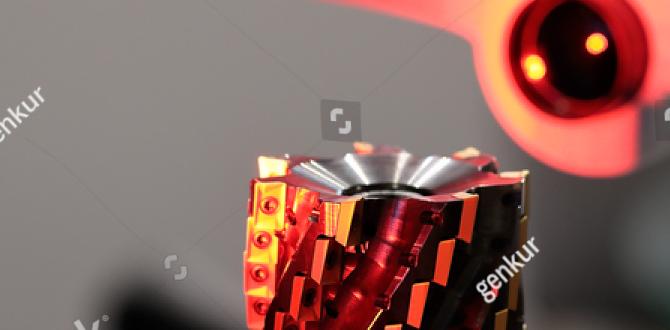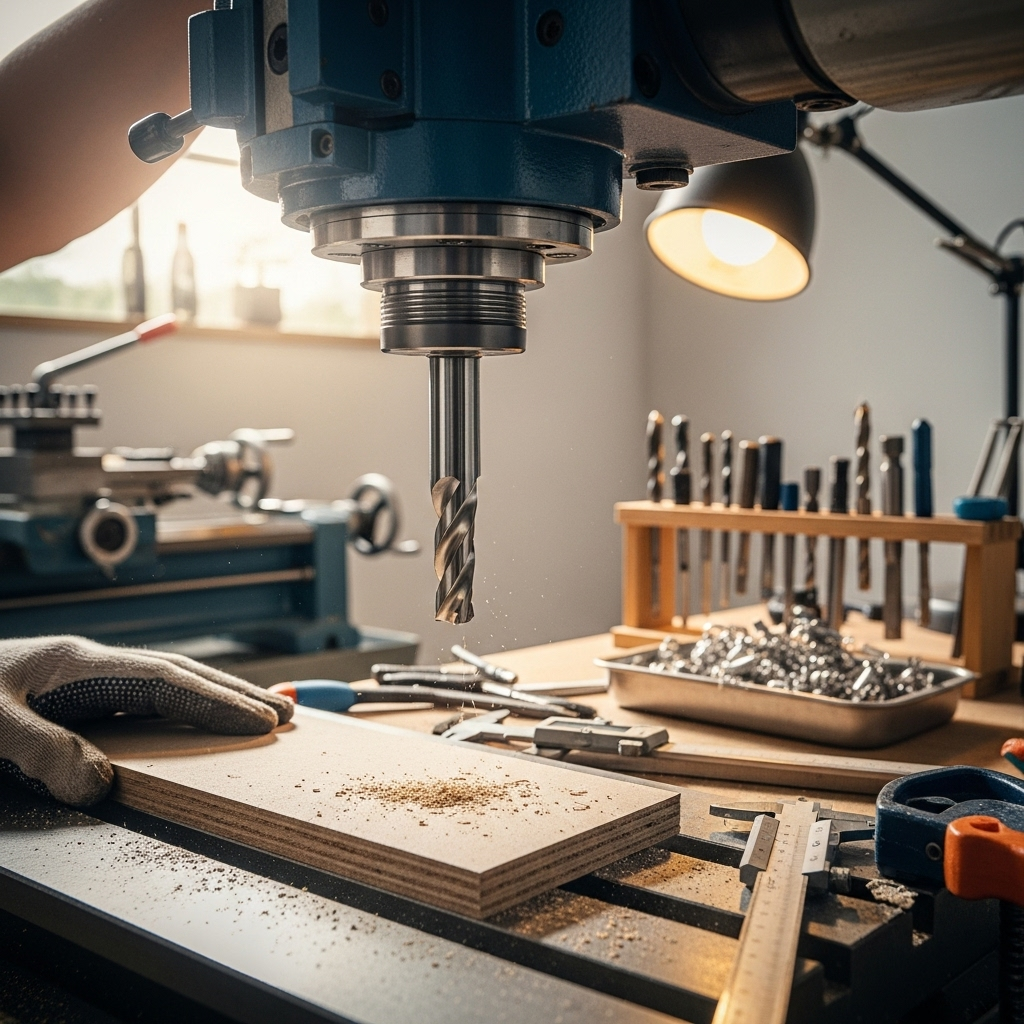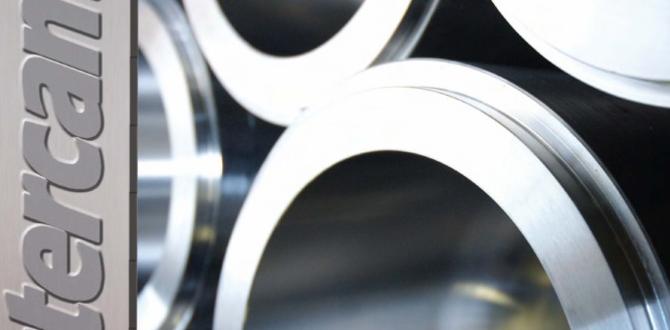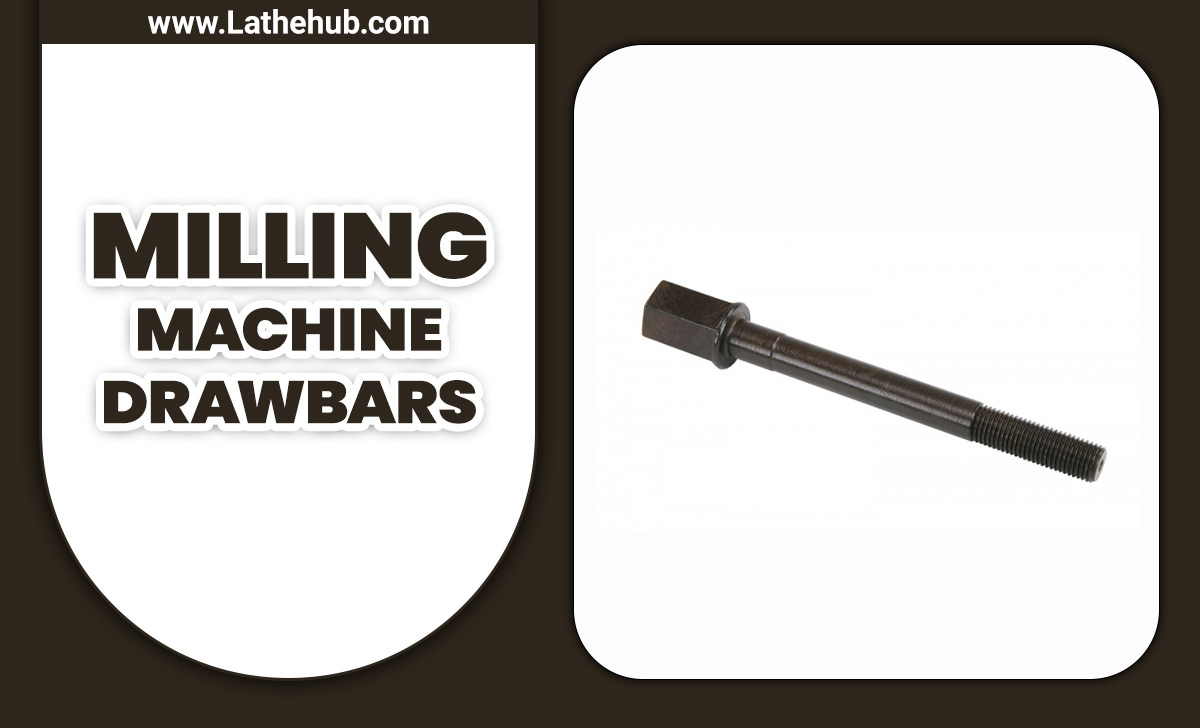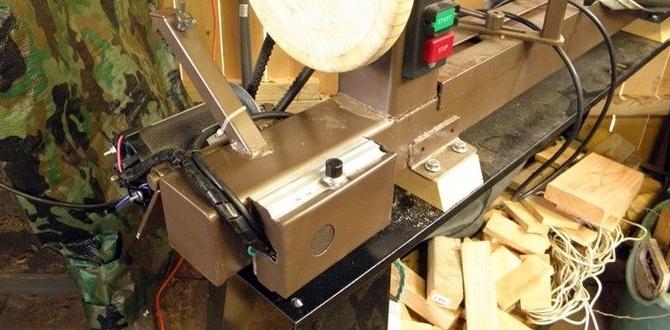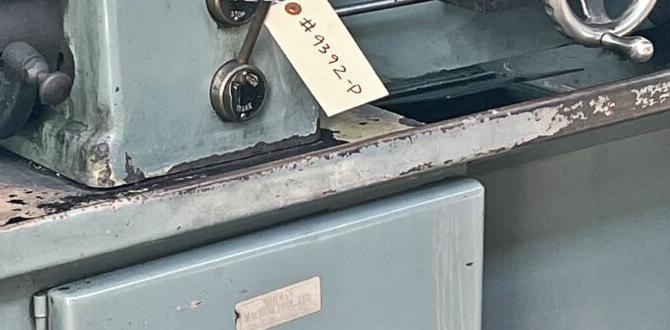Sharpening your wood lathe tools on a sharpening wheel is key to clean cuts and beautiful finishes. Follow these genius tips for a razor-sharp edge every time, ensuring safer woodworking and better results with minimal frustration.
Hey there, fellow makers and woodworkers! Daniel Bates here from Lathe Hub. Getting that perfect sheen on your turned projects often comes down to one crucial thing: sharp tools. Nothing kills creativity faster than a dull gouge or chisel that tears instead of cuts. It’s frustrating, it’s harder work, and honestly, it can be a bit dangerous. But don’t sweat it! Today, we’re diving deep into the world of wood lathe tool sharpening wheels. We’ll break down exactly how to get those tools singing again, making your turning smoother and your finishes cleaner. Get ready to transform your sharpening routine!
Why Your Wood Lathe Tools Need a Sharp Edge
A sharp tool is a woodworker’s best friend. It glides through the wood, leaving a clean surface that requires minimal sanding. Think of it like a hot knife through butter versus trying to push a dull butter knife through a brick. On a wood lathe, this difference is paramount. Dull tools require more force, which can lead to catches, unintended movements, and potentially dangerous situations. Plus, a sharp edge means less tear-out, fuzzies, and a far more enjoyable turning experience. Keeping your tools sharp is not just about aesthetics; it’s fundamental to safety and efficiency.
Understanding Your Wood Lathe Tool Sharpening Wheel
So, what exactly is a wood lathe tool sharpening wheel? It’s essentially an abrasive wheel designed to remove metal from your turning tools, restoring their cutting edge. Unlike grinding wheels that can overheat and damage the tool’s temper, many wood lathe sharpening wheels are designed for cooler operation, often using water or a dry system with specialized abrasive materials. The goal isn’t to reshape the tool drastically, but to refine the existing bevel angle and bring back that keen edge.
There are a few common types you’ll encounter:
Water-cooled sharpening systems: These use a moderately spinning wheel that is kept constantly wet. The water lubricates and cools the tool and the wheel, preventing the metal from overheating. This is ideal for maintaining the tool’s temper—the hardness that makes it effective.
Dry sharpening systems: These use high-speed wheels with diamond or CBN (Cubic Boron Nitride) abrasives. They are designed for very fast, cool cutting. While effective, they require a lighter touch to avoid overheating.
Belt sanders with sharpening attachments: Some versatile belt sanders can be fitted with specific belts for tool sharpening. These offer a different feel and abrasion, often favoured by those who also use belt sanders for shaping.
The “Genius” Tips for a Perfect Edge
Now, let’s get to the good stuff. These aren’t just random tips; they’re time-tested strategies that will make a real difference in your sharpening results.
Tip 1: Know Your Bevel Angles
Every tool type has an ideal bevel angle. This angle determines how the tool interacts with the wood. Too steep, and it might dig in. Too shallow, and it can be less effective or prone to damage.
Here’s a general guide:
Spindle Gouges (e.g., fingernail gouges): 35-45 degrees. A steeper angle is more aggressive, while a shallower angle is better for delicate cuts and finishing.
Bowl Gouges: Typically 50-60 degrees for general-purpose turning. For roughing out, a slightly steeper angle might be preferred. For finishing, a shallower angle can yield smoother results.
Scrapers: Usually sharpened straight on along the edge, or with a very slight bevel if preferred, depending on the scraper type.
Skew Chisels: This is tricky! The bevel angle varies based on how you use the skew (on edge or flat). Generally, a 40-45 degree primary bevel is a starting point, with potentially a secondary micro-bevel.
Getting these angles right is crucial. Using a simple angle jig or even just practicing freehand with a visual guide can help.
Tip 2: Consistency is King – Use a Jig!
While experienced turners can achieve great results freehand, for beginners (and even many intermediate users), a sharpening jig is a game-changer. A jig consistently holds your tool at the correct angle against the wheel. This eliminates the guesswork and ensures you get a repeatable, sharp edge every time.
Common jigs include:
Gouge jigs: These cradle the gouge and allow you to adjust the bevel angle and the distance the tool protrudes.
Chisel and skew jigs: These often have a flat platform or a V-shaped groove to hold the tool securely.
Investing in a good jig designed for your sharpening system will pay dividends in consistent results and reduced frustration.
Tip 3: Less is More – Don’t Over-Grind
This is probably the most important tip for preserving your tools and avoiding damage. Metal removal during sharpening should be minimal. You’re just trying to bring the existing bevel back to a sharp point.
Light Passes: Apply gentle pressure and let the wheel do the work.
Short Durations: Grind for only a few seconds at a time.
Cooling: If using a water-cooled system, ensure the wheel is consistently wet. If using a dry system, alternate between tools or let the tool cool frequently. Overheating your tool can “draw the temper,” making it soft and unable to hold a sharp edge. This is a mistake that’s hard to undo!
Listen and Feel: You’ll hear and feel when the tool is cutting the wheel. If you’re forcing it or it sounds like it’s struggling, you’re likely applying too much pressure or the wheel isn’t set up correctly.
Tip 4: Find the Sweet Spot for Wheel Speed and Grit
The speed of your sharpening wheel and the grit of the abrasive material are critical.
Wheel Speed: Slower speeds (like those on water-cooled systems, around 80-120 RPM) are generally safer for beginners and for maintaining the tool’s temper. Higher speed wheels (often dry systems) remove metal faster but require more care.
Grit: For most woodturning tools, a medium to fine grit is ideal for establishing and refining the edge. Coarse grits remove metal too quickly and can leave a rougher surface that needs more work to refine. Think about sharpening like sanding – you start with a coarser grit and move to finer grits for a smoother finish. For sharpening, you want an edge that’s keen but not so coarsely ground that it’s prone to chipping.
Tip 5: The “Set-Up” Grind vs. The “Touch-Up” Grind
You’ll use your sharpening wheel for two main purposes:
Set-Up Grind: This is when you are establishing the correct bevel angle on a new tool or after significant reshaping. This takes more time and careful attention to get the angle just right.
Touch-Up Grind: This is what you’ll do most often. After a few minutes of turning, your tool might feel a bit sluggish. A quick touch-up grind restores that razor edge without major metal removal. These should be very brief – just a few seconds on each side!
Regular touch-ups are far better than letting your tools get completely dull, as it saves time and preserves your tools.
Tip 6: Consider the Diamond Honing Wheel/Strop
Even after sharpening on your wheel, a final honing step can make a significant difference. Many woodturners follow up their wheel sharpening with a leather strop loaded with fine-grit honing compound. This refines the very apex of the cutting edge, removing any microscopic burr left by the wheel. The result is an incredibly sharp, smooth edge that cuts cleanly and lasts longer.
A specialized diamond honing wheel is also an option, offering a very fine abrasive for this final polishing step.
Tip 7: Safety First, Always!
Woodworking, especially using power tools and rotating machinery, demands a rigorous approach to safety.
Eye Protection: Always wear safety glasses or a face shield. Grinding can throw off sparks or abrasive particles.
No Loose Clothing/Jewelry: Tie back long hair, remove jewelry, and avoid loose clothing that could get caught.
Stable Setup: Ensure your sharpening wheel is securely mounted and stable.
Tool Rest: Use the tool rest provided with your jig or sharpening system. This supports the tool and helps maintain a consistent angle.
Know Your Machine: Read the manuals for your lathe, your sharpening system, and any jigs you use. Understand their limitations and operating procedures. For more on safe practices with machinery, resources like the NIOSH Woodworking Machinery Safety Toolkit offer valuable guidance.
Step-by-Step: Sharpening a Wood Turning Gouge
Let’s walk through the process of sharpening a common tool, like a spindle gouge, on a water-cooled sharpening system.
Preparation
1. Gather Your Tools: You’ll need your wood lathe tool sharpening wheel system, the gouge you want to sharpen, a jig for your gouge, and safety glasses.
2. Set Up the Sharpening System: Ensure the wheel is clean, properly mounted, and the water reservoir is full.
3. Adjust the Jig: Set up your gouge jig for the desired bevel angle. For a fingernail grind on a spindle gouge, aim for around 35-45 degrees. Adjust the distance the gouge protrudes from the cradle so that when the flute centerline contacts the wheel, you achieve this angle.
Sharpening Process
1. Engage the Wheel: Turn on your sharpening system. Make sure the wheel is spinning and, if water-cooled, that plenty of water is flowing.
2. Position the Gouge: Place the gouge in the jig, bevel down. Bring the bevel into light contact with the face of the spinning wheel.
3. The Grind – First Side: With light, consistent pressure, move the gouge back and forth across the face of the wheel. The motion should be smooth, covering the entire bevel surface. Aim to grind for just a few seconds (5-10 seconds is often plenty for a touch-up).
4. Check for Spark/Burr: Lift the gouge and feel the back edge (the cutting edge). You should feel a slight “burr” or a raised metal edge on the opposite side of where you were grinding. This indicates you’ve ground all the way to the edge. Some prefer to see a tiny spark, but with water-cooled systems, this is less common and not always necessary.
5. Grind – Second Side: If you didn’t grind all the way through to create a burr, repeat on the first side for a few more seconds. Once you feel a burr consistently along the edge, flip the gouge over and grind the other side of the bevel to remove that burr and create a new, more refined burr on the opposite side of the edge. Again, do this for only a few seconds.
6. Refine the Edge: You’ve now created your secondary burr. The goal is now to refine this edge. You can do this by lightly touching only the bevel to the wheel for a couple of seconds, then checking. The burr should mostly disappear, leaving a sharp edge.
7. Check for Sharpness: The best way is to carefully feel the edge (away from the flute), or use a piece of paper or soft wood. A sharp tool will shave a thin curl with ease.
Honing (Optional but Recommended)
1. Prepare the Strop: If using a strop, ensure it’s loaded with honing compound.
2. Hone: Place the bevel flat on the strop and drag it forward, away from the edge. Flip the tool and do the other side. Repeat a few times. This removes the microscopic burr and polishes the edge.
And there you have it! A sharp gouge, ready for action. Always remember to flush your tools to remove any grinding grit before turning.
Sharpening Different Wood Lathe Tools: A Quick Guide
While the principles are the same, the execution can vary slightly for different tools.
Bowl Gouges
Bevel Angle: Typically 50-60 degrees for general use.
Jig: Use a gouge jig that supports the tool and allows for angle adjustment.
Motion: The back-and-forth motion is similar. The key is maintaining the correct flute-to-wheel relationship to achieve the desired bevel angle. Many jigs have a “sweet spot” for different gouges.
Scrapers
Bevel: Most scrapers have a very thin or almost non-existent bevel. The sharpening is often done by lightly touching the flat edge to the wheel for a moment to deburr or very slightly hone it.
Motion: Light tap or a very brief swipe. Over-grinding can create a bevel where you don’t want one.
Diamond Plate: Many turners prefer a diamond file or plate at a slight angle for scrapers.
Skew Chisels
Bevel: This is where it gets nuanced. Skews have two bevels. For shaping on the flat, you sharpen the primary bevel. For cutting on the edge, you might slightly touch up the secondary bevel.
Jig: A specialized skew jig or a flat rest can be used.
Motion: Consistent, even passes. Be careful not to round over the edge of the skew, as its sharp corner is critical for specific cuts.
Troubleshooting Common Sharpening Problems
Even with the best intentions, you might run into a few snags. Here’s how to fix them.
Problem: Tools still feel dull after sharpening.
Cause: Insufficient grinding, incorrect bevel angle, or the tool temper was drawn.
Solution: Ensure you’re grinding long enough to create a burr on both sides. Double-check your jig setup for the correct angle. If you suspect overheating, allow the tool to cool completely and try again with lighter pressure and shorter passes.
Problem: Edge chips easily.
Cause: The edge is too coarse from the grinding wheel, or the tool temper is compromised.
Solution: Use a finer grit abrasive wheel or spend more time honing/stropping the edge to refine it. If it persists, you may have overheated the tool and need to grind a bit more away to reach cooler metal, then refine the edge carefully.
Problem: Inconsistent edge.
Cause: Inconsistent jig setup, uneven pressure, or tool wandering on the wheel.
Solution: Ensure your jig is locked down and the tool is seated properly. Practice a smooth, consistent back-and-forth motion. Use a jig that provides good support.
Problem: Spending too much time sharpening.
Cause: Letting tools get too dull between sharpenings, or over-grinding.
* Solution: Perform regular “power strokes” or touch-up grinds after short periods of use. Focus on light passes and letting the wheel do the work, rather than grinding away excessive metal.
Essential Sharpening Tools and Accessories
Beyond the sharpening wheel itself, a few items can make the process smoother and more effective.
| Tool/Accessory | Description | Why You Need It |
| :——————– | :—————————————————————————————————— | :————————————————————————— |
| Gouge Jig | A device that holds your gouge and guides it against the sharpening wheel at a consistent angle. | Ensures accurate and repeatable bevel angles, crucial for good performance. |
| Chisel/Skew Jig | Similar to a gouge jig, but designed for flat-sided chisels and skews. | Provides stability and consistency for these tools. |
| Angle Finder/Gauge| A tool to check your bevel angles. | Helps set up your jig correctly and verify your angles. |
| Honing Compound | An abrasive paste applied to leather strops or honing wheels. | Polishes the edge to an incredible sharpness, removing micro-burrs. |
| Leather Strop | A piece of leather, often mounted on wood, used with honing compound. | The final step for a truly razor-sharp, smooth cutting edge. |
| Magnifying Glass | For closely inspecting the edge after sharpening. | Helps you see if the edge is refined and free of damage. |
| Fine-grit Bench Stone | For occasional hand sharpening or touch-ups if a jig isn’t practical for a specific tool. | Offers a different feel and can be useful for certain repair situations. |
| Safety Glasses/Face Shield | Personal protective equipment. | Absolutely essential for protecting your eyes from debris. |
The Future of Tool Sharpening
Technology in tool sharpening is constantly evolving. While traditional grinding wheels and stones remain staples, advancements in abrasive materials like CBN and specialized diamond coatings are offering faster, cooler, and more precise sharpening. Automated jig systems and even AI-guided sharpening are on the horizon, promising to make the perfect edge even more accessible to hobbyists and professionals alike. Staying informed about new technologies can lead to more efficient and effective sharpening practices. For instance, understanding the science behind abrasives can help you choose the right wheel for your needs; resources at places like the NIST Manufacturing Materials and Nanotechnology provide insights into these advanced materials.

